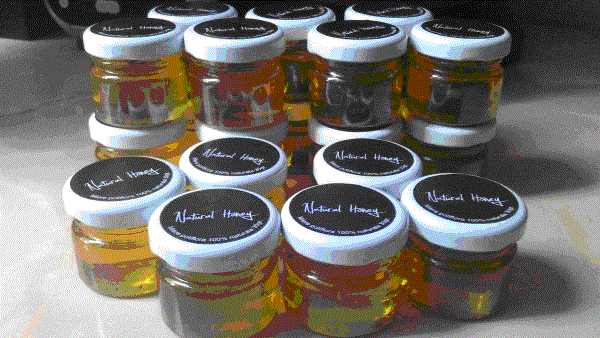Beekeeping in Romania in the 21st century

Romania has a long tradition of beekeeping and over the past 100 years, Romanian beekeeping has experienced several ups and downs. Romanian beekeeping is currently following the world's leading beekeeping trends, which need to be considered in more detail.
Content
- History of Romanian beekeeping
- Organic apiaries in Romania
- Modern Romanian beekeeping
- The face of a Romanian beekeeper
- Romanian honey and bee products
- Export of honey from Romania
History of Romanian beekeeping
Beekeeping in Romania has been known for a long time, without delving into the mists of time, we can say that over the past 100 years, beekeeping in Romania has experienced several ups and downs.
In 1961 in Romania, almost all peasants were accustomed to having several beehives, in total there were 653,000 beehives registered in the country. Romanian beekeeping developed rapidly and by 1989 had reached an impressive number of 1,418,000 hives. Then the political, economic, social changes that took place after 1990 had a strong impact on the Romanian beekeeping and agriculture. Thus, by 1994, the number of hives in Romania was reduced to 614,000, reaching a level quite comparable to the sixties. Since 2000, the number of bee colonies in Romania began to grow, reaching 1,962,000 hives by 2019.
Organic apiaries in Romania
The year 2000 was a milestone year in Romanian agriculture when organic agriculture was introduced and Romanian beekeeping began to develop in this direction. In the production of this honey in 2008, 584 certified beekeepers were employed (in 2005 - 132), 15 processors, 22 traders, 1 importer and 8 exporters of honey. Of the 3650 tons of organic honey produced in 2010, 80% was sent to Germany, Norway and other Scandinavian countries. In 2011, there were 927 beekeepers in this sector of Romanian beekeeping - owners of about 100,000 bee colonies. In 2019 in Romania, already 5.2% of the total number of beekeepers in Romania had organic apiaries, these beekeepers served 9.7% of all hives in the country. Of these hives, 9.8% were in transition and 90.2% of the hives were certified organic.
Modern Romanian beekeeping
The basis of Romanian beekeeping is made up of small private farms, which are "under the protective umbrella" of honey processing companies and beekeeping associations and associated contracts for the supply of products.
After Romania joined the EU in 2004, Romanian beekeepers began to use European technologies more widely. With the transition of Romania to the European regulation of honey, the quality of this product has increased. The implementation of the National Beekeeping Development Program since 2008 has contributed to the growth in the number of bee colonies, the strengthening of the professional sector in beekeeping, and the increase in honey production and export.
In 2019, a large number of apiaries and beehives were observed in several large areas with rich honey resources (linden and acacia forests), in the counties of Valcea, Buzau, Tulcea, Salaj, Bacau, Ias and Vaslui.
Almost 40% were engaged in stationary beekeeping, 27.9% were engaged in nomadic beekeeping, and the remaining 32.3% were engaged in mixed beekeeping.
The face of a Romanian beekeeper
Almost 55% of beekeepers keep apiaries from 11 to 80 hives. Beekeeping is more of a family business than wage labor; 80% of the apiaries were run by one or two members of the same family. In Romania, beekeeping was mainly done by men (87.3%).
Beekeeping is done by people over 35 years old, only 12.5% were younger. Another significant feature is that beekeeping was mainly done by people with higher education (63%). 53.6% of beekeepers have been beekeepers for more than 10 years.
Beekeepers with less than 3 years of experience tend to be the youngest (18–25 years old) and have fewer than 10 hives. In contrast, the longest-serving beekeepers (30 years or more) were aged (55–64 years, >64 years) and their apiaries were large, with over 150 hives. Nomadic apiaries with more hives (81–150 hives, >150 hives), while stationary apiaries have fewer hives (11–50 hives).
Romanian honey and bee products
Of all bee products, honey is produced by almost all beekeepers (98.1%). Wax is obtained by 76.3% of beekeepers, 64% of them also produced propolis, 48.3% received pollen, 7.7% received royal jelly, and only 0.5% of beekeepers received bee venom. Most beekeepers (81%) produced polyfloral honey. Mostly sunflower honey (47.9%) and acacia honey, rapeseed honey (34.8%) and
linden honey (32.9%), the rarest type of honey is honeydew honey - which is received by only 14.2% of beekeepers. Very rare varieties of honey from mint, coriander and phacelia honey. 43.9% of beekeepers produced, at least once, a honey mix with various additives such as pollen, propolis, dried fruits or seeds.
Most beekeepers sold honey through acquaintances. and friends (90.2% of beekeepers do this). Of the beekeepers, 29.2% sell it in bulk to middlemen, 15.2% sell it online, and nearly 11.7% sell honey at farmers' markets. Large retail chains were difficult to reach for most of them, only 0.5% of beekeepers managed to sell honey through them.
Over the past 20 years, the average per capita consumption of honey in Romania has increased and is currently 400 - 600 g, which is below the average for the European Union (0.7 kg).
Export of honey from Romania
In terms of honey exports, Romania ranks 13th-15th among the world's top 20 honey exporters. Up to 90% of exported honey is supplied to five EU countries - Germany, Great Britain, Italy, Austria and Poland. A small part of honey is also exported to the USA, Canada, Japan, China and other countries. The average price of exported honey, depending on its variety and quality, is 2.4-3.5 euros per kilogram.
In 2010, honey exports in value terms amounted to 32.0 million euros, while imports - 1.8 million euros.
